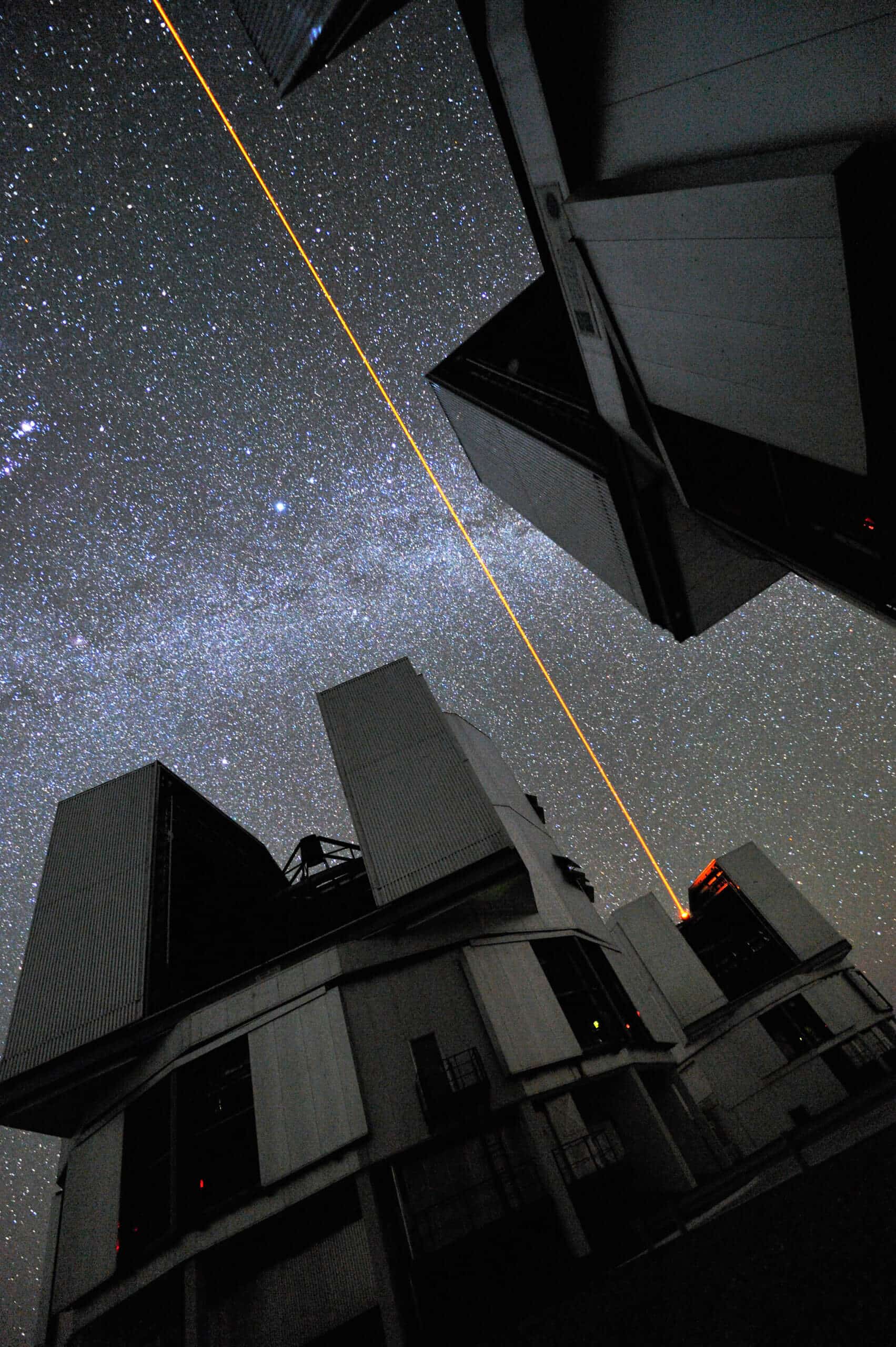New technologies could enable the discovery of technological markers from intelligent beings on distant planets
By Macy Houston, PhD Student in Astronomy and Astrophysics, Penn State and Jason Wright, Professor of Astronomy and Astrophysics, Penn State

If an alien were to look at Earth, it would see imprints of many human technologies - from cellular antennas to fluorescent light bulbs. These technologies could have been a beacon signaling the presence of intelligent life.
We are two astronomers working on the search for extraterrestrial intelligence - or SETI. In our research we try to characterize and identify signs of technology that originates from beyond the earth. These are called technosignals. While scanning the skies for an extraterrestrial Olympics telecast may sound simple, searching for signs of distant and advanced civilizations is a much more nuanced and difficult task than it seems.
The modern scientific search for extraterrestrial intelligence began in 1959 when astronomers Giuseppe Cocconi and Philip Morrison showed that radio transmissions from Earth could be detected by radio telescopes at interstellar distances. That same year, Frank Drake began SETI's first search, Project Ozma, by pointing a large radio telescope at two nearby sun-like stars to see if he could detect radio signals coming from them. Following the invention of the laser in 1960, astronomers showed that even light in the visible range can be detected from distant planets if they have intelligence that has reached the level of producing lasers
These early and rudimentary attempts to detect radio or laser signals from another civilization all focused on focused, powerful signals that were deliberately transmitted into the solar system and intended to be detected by its inhabitants.
Given the technological limitations of the 60s, astronomers did not give serious thought to the search for broadcast signals of the alien equivalents of television and radio on Earth, but a beam of radio signal, if all its power is focused towards Earth, can be detected from a much greater distance - just imagine The difference between a laser and a weak bulb.
The search for tunable radio and laser signals is still one of the most popular SETI strategies today. However, this approach assumes that extraterrestrial civilizations want to communicate with other technologically advanced life. Humans very rarely send targeted signals into space, and some researchers suggest that intelligent species may deliberately avoid broadcasting their location. This search for signals that no one can send is called the SETI paradox.

Leaky radio waves
Although humans don't send many directional signals into space, many technologies people use today produce a lot of radio transmissions that leak into space. Some of these signals would be detectable if they came from a nearby star.
The global network of television towers is constantly emitting signals in many directions that leak into space and can add up to a detectable, albeit relatively weak, radio signal. Researchers are still trying to figure out whether emissions from radio cellular antennas on Earth will be detectable with today's telescopes on planets outside the solar system, but the nearby Square Kilometer Array radio telescope will be able to detect even weaker radio signals with 50 times greater sensitivity than telescope arrays. Current radio.
However, not all man-made signals are so unfocused. Astronomers and space agencies use beams of radio waves to communicate with satellites and spacecraft in the solar system. Some researchers also use radio waves for radar to study asteroids. In both of these cases, the radio signals are more focused and point towards space. Any extraterrestrial civilization that happened to be in line of sight of these beams could presumably detect these unambiguous artificial signals.

Finding megastructures
Aside from finding a real alien spaceship, radio waves are the most common technosignals that appear in science fiction movies and books, but they are not the only signs that can be found in space.
In 1960, astronomer Freeman Dyson theorized that since stars are by far the most powerful source of energy in any planetary system, a technologically advanced civilization might harvest much of the starlight as energy with what would essentially be a massive solar panel. Many astronomers call them megastructures, and there are several ways to identify them.
After using the energy in the captured light, an advanced company's technology will re-emit some of the energy as heat. Astronomers have shown that this heat can be detected as additional infrared radiation coming from a star system.
Another possible way to find a megastructure is to measure its dimming effect on a star. Specifically, large planets orbiting a star would periodically block some of its light. This will appear as a decrease in the apparent brightness of the star over time. Astronomers could detect this effect similar to how distant planets are detected today.
An artist's rendering of a planet covered in cities and with a chemically altered atmosphere.
Advanced civilizations may produce a lot of pollution in the form of chemicals, light and heat that can be detected across the vast distances of space. NASA/J Friedlander
A lot of pollution
Another technology that astronomers have thought about is pollution.
Chemical pollutants - such as nitrogen dioxide and chlorofluorocarbons on Earth are produced almost exclusively by human industry. These molecules can be detected in the atmospheres of exoplanets using the same method that the James Webb Space Telescope uses to search distant planets for signs of biology. If astronomers find a planet with an atmosphere full of chemicals that can only be produced through technology, it could be a sign of life.
Finally, artificial light or heat from cities and industry can also be detected by large optical and infrared telescopes, as can numerous satellites orbiting planets. But a civilization would have to produce far more heat, light and satellites than the Earth does for them to be discernible across space using the technology humans have today.
Which letter is the best?
No astronomer has ever found a confirmed technosignal, so it's hard to say what the first sign of alien civilizations will be. While many astronomers have thought a lot about what might make a good signal, ultimately, no one knows what extraterrestrial technology might look like and what signals are out there in the universe.
Some astronomers support a general SETI approach that looks for anything in space that current scientific knowledge cannot naturally explain. Some, like us, continue to look for intentional and unintentional techno-signals. Bottom line, there are many ways to detect life on distant planets. Since no one knows which approach might succeed first, there is still much exciting work to be done.

One response
Macy's genius is signatures.
Since then she has published senior professors jumping on the bandwagon as if they too thought of it.
https://www.quantamagazine.org/alien-life-a-dream-of-discovery-finds-new-hope-20221103/